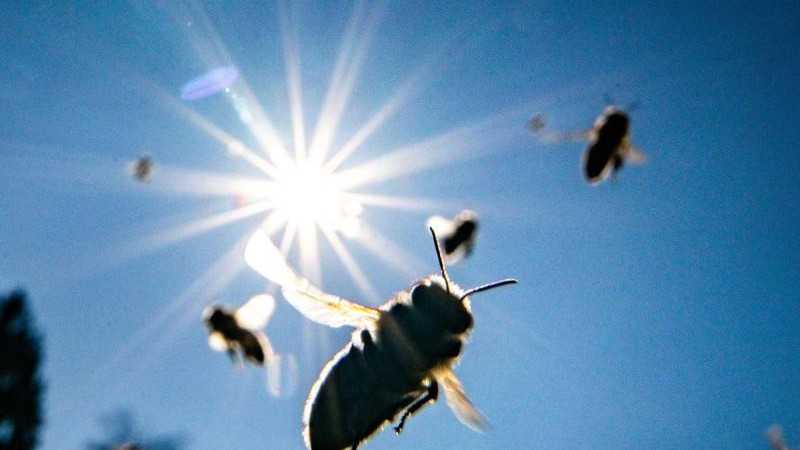Brighton (dpa) – Already four square meters of wildflower meadow in a garden could be a valuable oasis for insects.
Significantly more pollinators could then be found, shows a two-year experiment by English researchers with citizen scientists. Accordingly, there are, for example, more wild bees and bumblebees as well as wasps in gardens with a small flower meadow.
“97 percent of lowland wildflower meadows in England and Wales were lost between 1930 and 1984,” Janine Griffiths-Lee’s group at the University of Sussex in Brighton explains in the Journal of Insect Conservation. Could small patches containing such lawns help improve beneficial insect habitats and increase biodiversity? To illustrate, the team invited citizens with a garden of at least 20 square meters to participate via an amateur research facility and social media.
150 citizen scientists were divided into three groups: one received a wildflower seed mix that was sold at garden centers; One was given a seed mixture formulated from the scientific literature on the preferences of beneficial insects; There was no seed for the third group, which served as a control group.
All participants received colored bowls to be filled with water and some washing up liquid – insects were caught with them. Sticky traps were added in the second year. These are created from May to August in the first week of every month for two consecutive dry days.
A total of 34,438 insects caught by experts were identified before all data collected were evaluated using statistical methods. In the first year, small wildflower meadow gardens attracted 109 percent more bumblebees, 24 percent more solitary bees, and 126 percent more solitary wasps than control gardens. In the second year, the number of bumblebees increased by 111 percent, 87 percent of solitary bees, and 85 percent of solitary wasps.
The first mixture attracted more bees and bumblebees, while the second mixture attracted more wasps — including parasitic wasps that nest in and kill the offspring of insect pests. Cornflowers, rough meadowsweet, black tusk, carrot, hornwort and coral clover, as well as red gimbi are represented in both mixtures. In general, however, the first mixture purchased in the second year ensures much higher biodiversity among insects than the second mixture.
“This project shows that small lawns can really help pollinators by increasing insect numbers and garden diversity,” explains Griffiths Lee. Even small flower beds, whether in gardens, allotments, or roadsides, can deliver measurable benefits to insects and pollinators, according to co-author Beth Nichols. The research group hopes the findings will convince more gardeners to plant small lawns for wildflowers — even if they are only four square metres.
© dpa-infocom, dpa: 220320-99-596130 / 3

“Alcohol buff. Troublemaker. Introvert. Student. Social media lover. Web ninja. Bacon fan. Reader.”






More Stories
Ecologists Celebrate New Xesap National Park in Laos | Science
Is the wrong diet making you forget?
We can study it with a new telescope.